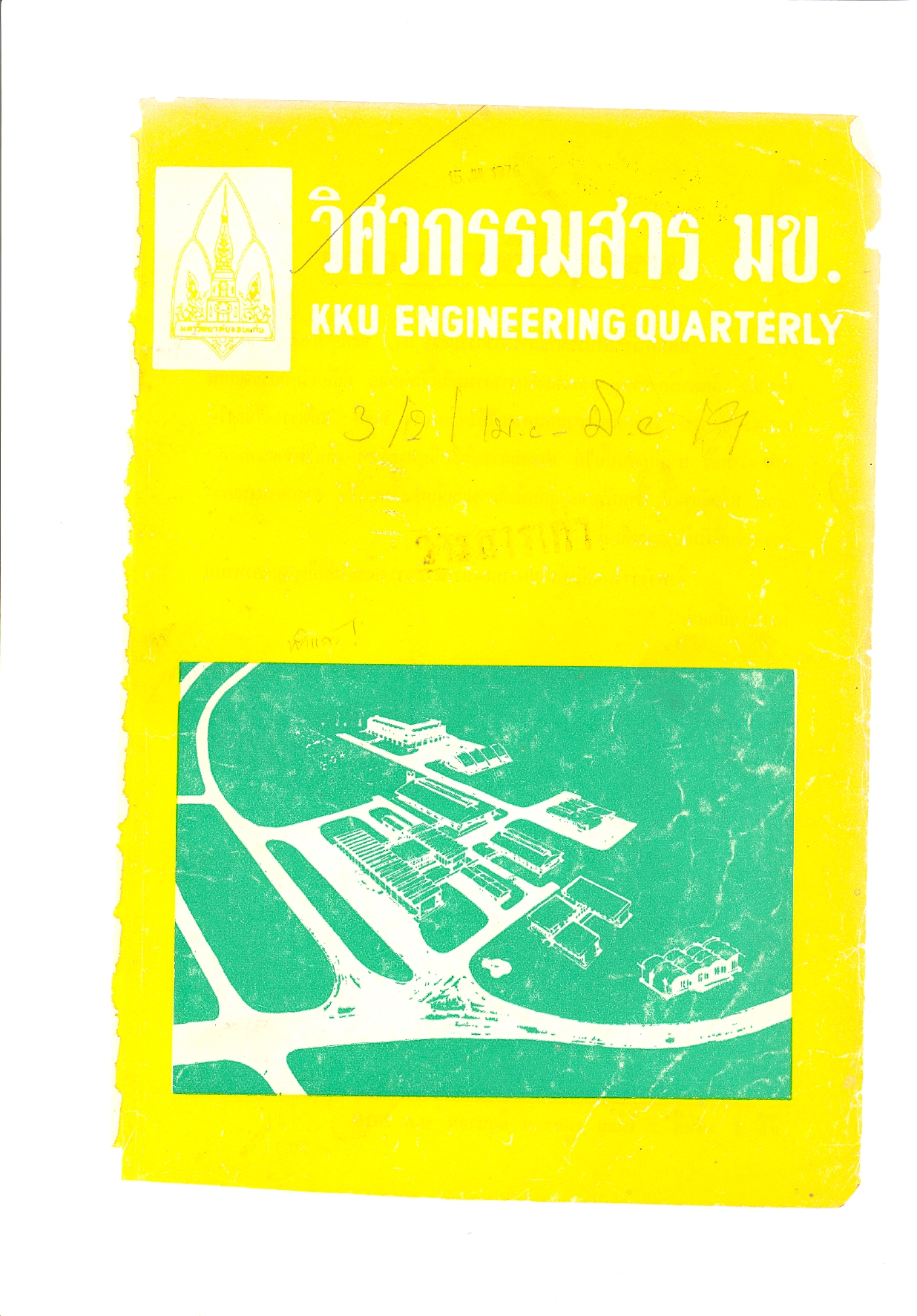Wind Load During The Life of a Structure in Bangkok
Main Article Content
Abstract
The gradient velocity-return period relationship is shown as the straight lines in Fig. 3 It can be clearly seen that the Don Muang result and the Sukhumvit result almost coincide and on significant difference occur at any stage. However only the Don Muang one is used in developing the pressure-height relationship for various common terrains and return periods.
Fig, 1.4 to Fig, 4.4 represesent the obtained final results for the four terrains between p = 1/3.5 and p = 1/6.5. The design pressure-height relationship can always be adopted in the static analysis of wind load on simple box type buildings. Each figure contains the four common return periods (100 to 400 years) which can be converted to the design life of structures for any desired risks by Eq. (7). Any other terrains with any other return periods can always be similarly attained. Steps of constant pressure may be adopted according to engineeas judgment.
It is considered that these design pressure-height relationships lead to conservative results since it is true that the terrain at one location changes from time to time, usually to a rougher one. If one can predict how the terrain will change during the life of a structure it may be useful to include a reduction factor. Otherwise it may be concluded that a safety factor has already been taken into account.
Article Details
This work is licensed under a Creative Commons Attribution-NonCommercial-NoDerivatives 4.0 International License.



